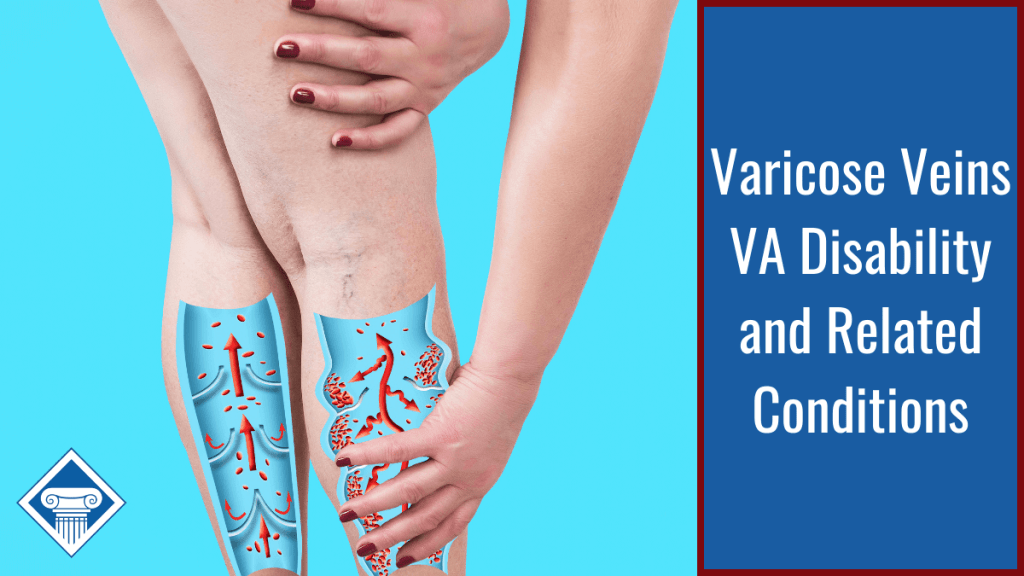Vein disorders can affect veterans who were immobile for long periods during their military service. If you believe you have a venous disorder or have visible varicose veins, you’ll want to learn more about VA disability for these conditions.
Talk to Us About Your Claim:
(866) 232-5777
You learned to sit, crouch, or stand for long periods without moving. Staying still kept you and your fellow soldiers safe. It was something you all learned to do well. Now, as you age, you have dark, raised veins on your legs. Your legs also swell and ache. You may have developed a vein disorder that’s related to your military service or another service-related condition. This post explains VA disability for varicose veins.
In this article about VA ratings for vein conditions:
“They have shown me nothing but professionalism and quick responsiveness to any situation. Without this firm, I truly believe I would not have gotten all the benefits that I was eligible and entitled to receive. I have referred 16 veterans to this law firm.“
What are venous disorders?
A venous disorder is any condition that damages your veins, which distribute blood around your body between your organs and tissues. Injury, high blood pressure, and other diseases can cause venous disorders.
Symptoms of varicose veins can include:
- Pain or cramping
- Redness, itching, or swelling
- Fever
- Bulging veins
Research has found that veterans may be more prone to venous disorders because of the need to stand for long periods. Other conditions related to military service may also cause blood vessel conditions.
VA rating for venous conditions
The VA rates all venous disorders under Diagnostic Code 7121, which is for varicose veins, a specific vein disorder. The rating is based on the severity of symptoms, including the level of swelling (edema), stasis pigmentation (discoloration), hardening (subcutaneous induration), and leaking or discharge (ulceration).
| Description | VA Rating | Monthly payment (vet only) |
|---|---|---|
| Massive board-like edema with constant pain at rest | 100% | $3,737.85 |
| Persistent edema or subcutaneous induration, stasis pigmentation or eczema, and persistent ulceration | 60% | $1,3161.88 |
| Persistent edema and stasis pigmentation or eczema, with or without intermittent ulceration | 40% | $755.28 |
| Persistent edema, incompletely relieved by elevation of extremity, with or without beginning stasis pigmentation or eczema | 20% | $338.49 |
| Intermittent edema of extremity or aching and fatigue in leg after prolonged standing or walking, with symptoms relieved by elevation of extremity or compression hosiery | 10% | $171.23 |
The following are conditions that the VA rates under this diagnostic code.
Varicose veins VA disability
Varicose veins are enlarged, twisted veins. They are most common in the legs, but can occur anywhere in the body. Weak or damaged vein walls and valves cause varicose veins, which develop when blood doesn’t flow correctly through the veins. Instead, it pools or flows backward.
You can usually see varicose veins, which can be caused by excess weight, age, pregnancy, or having a job or military assignment where you stand or sit a lot. They can ache, swell, and harden.
Doctors can treat varicose veins through compression garments or medical procedures. If left untreated, varicose veins can result in random bleeding.
VA disability rating for deep vein thrombosis and blood clots
Deep vein thrombosis (DVT) is when a blood clot forms in a vein. These blood clots are usually in the lower leg, thigh, or pelvis, but can also occur in the arm. DVT is a critical condition because blood clots can dislodge and cause death.
DVT can cause swelling, pain, or fever. However, in some cases, people affected by DVT don’t experience any symptoms.
Like varicose veins, a common cause of DVT is standing, sitting, or staying in one position too long.
VA rating for CVI
Chronic venous insufficiency (CVI) is when the veins in your legs don’t properly pump blood to the heart. It causes swelling and varicose veins or other discoloration in your legs, and it could cause ulcers on your legs.
CVI can be caused by untreated varicose veins or DVT that result in blockages.
If left untreated, CVI causes consistent pain, swelling, ulcers, and could lead to dangerous blood clots.

Vein disorders and related conditions
While vein disorders may develop from the regular demands of military service, like sitting, squatting, standing, or remaining immobile for long periods, they could also be associated with other service-related conditions. Even if you are able to get treatment for varicose veins, these related conditions can still make life difficult for vets.
Varicose veins and depression
Research has found that people with varicose veins have a greater likelihood of developing major depressive disorder. The relationship between varicose veins and depression is thought to be because the aching and swelling the veins cause reduces a person’s ability to do the daily activities they enjoy, lowering their quality of life. The VA provides disability benefits for depression.
Varicose veins and obesity
Obesity is a major factor in developing varicose veins because it puts more weight on your legs, adding stress to the veins. While there is no VA rating for obesity, there are related disabilities that may connect weight and varicose veins to a military condition. These conditions include diabetes, heart disease, and mental health disorders.
Varicose veins and ulcers
Varicose veins also increase the risk of developing venous ulcers, which are open sores that develop when the blood doesn’t travel through your legs properly. These ulcers require medical treatment to avoid infection. They also reduce a person’s quality of life and are associated with the development of depression and anxiety.\
TDIU for venous conditions
A veteran may be awarded total disability based on individual unemployability (TDIU) for venous conditions if they can’t obtain substantially gainful employment as a result. TDIU may be granted for a vein disorder alone or may be granted based on the combined effects of multiple service-connected conditions.
A venous disorder can leave a veteran in almost constant pain with extreme swelling and open sores on their legs. This disorder may keep them from performing work-related tasks like walking or standing. They also may not be able to sit for long periods and may need to frequently elevate their legs.
When veterans are granted TDIU, they are compensated at the 100% disability rating level even though their condition is rated below 100%.
Veterans who can’t hold down a steady job that supports them financially (known as substantially gainful employment) because of their service-connected disabilities are typically eligible for TDIU if they have:
- One service-connected disability rated at 60% or more disabling OR
- Two or more service-connected disabilities with at least one rated at 40% or more disabling and a combined rating of 70% or more
“If you were injured while serving this country and are reading this review, I encourage you to contact Woods and Woods right away. They are always standing ready to assist veterans in need.”
How our VA-accredited attorneys can help
If you have a service connection for vein conditions that affects your ability to live and work, you deserve VA disability compensation. Contact Woods and Woods today for a free consultation to see how we can help. You only pay us if we win.
Talk to Us About Your Claim:
(866) 232-5777
FREQUENTLY ASKED QUESTIONS
If you have varicose veins as a result of your military service, you may be eligible for VA disability benefits. The rating for varicose veins is 100%, 60%, 40%, 20%, or 10%, depending on the severity of your symptoms.
Varicose veins are one form of vein disease and are a symptom of other types of vein conditions. The VA does consider varicose veins a disability if they’re related to your military service.

Neil Woods
VA disability lawyer
Woods and Woods
U.S. Department of Veterans Affairs Accreditation Number: 44739



